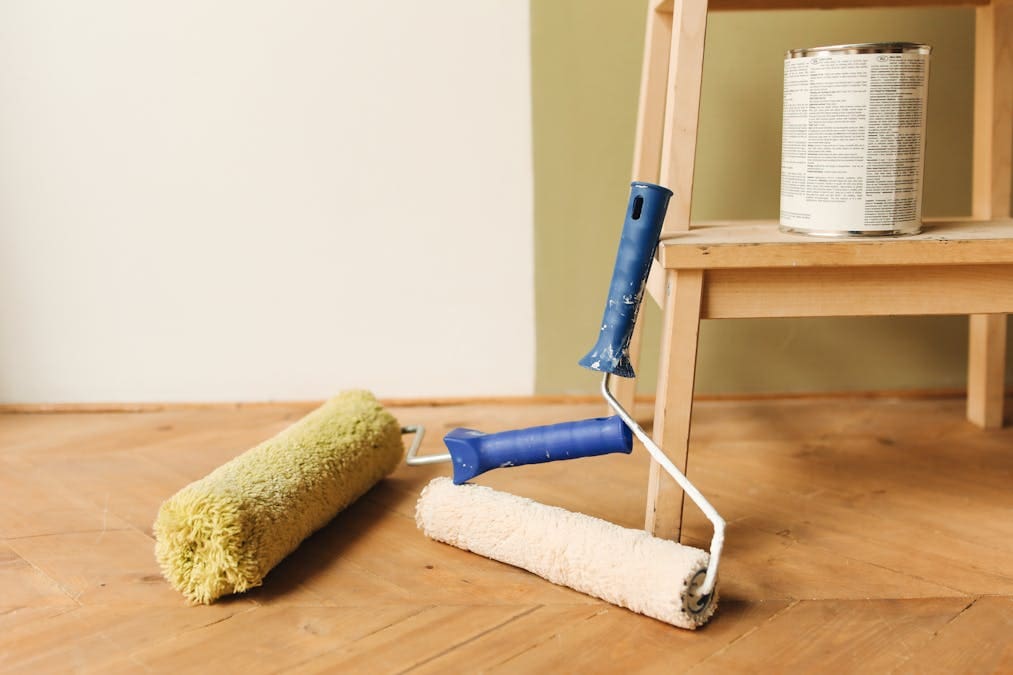Essential Tips to Maintain Your Home’s Paint Job Year-Round in Littleton

A professional exterior paint job doesn’t just improve curb appeal—it protects your home’s surfaces from weather, wear, and moisture. That’s especially important in a place like Littleton, where the seasons shift dramatically and each one brings its own set of challenges for exterior surfaces.
In the summer, intense sun and dry air can cause fading, chalking, and premature aging. In the winter, snow and ice test the flexibility of your paint, and spring rains or hailstorms can cause physical damage. Even wind and dust erosion play a role in how long your paint job will last.
Below, we’ll walk through the most effective tips to maintain your home paint job, with special attention to what Littleton homeowners should watch out for throughout the year.
Perform Seasonal Visual Inspections
Keeping your home’s paint in top shape doesn’t always require major work—it often starts with observation. Doing a simple walk-around of your property at least twice a year can help you spot issues early and address them before they turn into major damage.
In Littleton, the best times to perform these inspections are early spring—after the snow has melted and before heavy rains—and again in the fall before winter sets in. You’re looking for signs that weather or age is beginning to wear on your paint.
Here’s what to look for during a seasonal inspection:
- Peeling or flaking paint: This usually shows up around trim, fascia boards, or areas that get a lot of direct sun or moisture.
- Cracks in caulking: Especially around window frames, door trim, and siding seams. These gaps allow water to seep in behind the paint layer.
- Discoloration or fading: This can indicate UV damage or worn-out protective finishes, especially on darker paint colors.
- Exposed wood or substrate: If bare patches have formed, it’s only a matter of time before moisture starts to damage the material underneath.
- Signs of mildew, mold, or staining: North-facing walls or areas near dense landscaping tend to hold moisture longer, which can lead to microbial growth.
Bring a notepad or take photos if you spot anything that needs attention. A 20-minute walk-through twice a year could save you thousands in premature repainting or structural repairs caused by water damage.
Clean Dirt, Pollen, and Mildew Buildup
Even when your paint appears intact, grime and buildup can quietly shorten its lifespan. Littleton’s dry summers, occasional windstorms, and tree-heavy neighborhoods mean dust, pollen, and debris accumulate quickly, especially on horizontal siding, window trim, and soffits.
When left untreated, this buildup can create a thin, gritty layer that wears down protective coatings and dulls your paint’s color. In shady or damp areas, it may also promote mildew or algae growth, which can eat away at the paint film or lead to staining.
Tips for cleaning painted exteriors effectively:
- Use low pressure when washing: A garden hose with a spray nozzle or a soft-wash system is enough. Avoid high-pressure washers unless you’re experienced—they can strip paint or damage caulked joints.
- Target mildew-prone areas: Look for north-facing walls or areas under roof overhangs. Use a diluted mixture of water and white vinegar or a commercial mildew cleaner to treat them safely.
- Don’t forget trim, shutters, and decorative details: These areas often catch spider webs, bird droppings, or tree sap, which can etch or stain paint over time.
- Time your cleaning seasonally: Spring and early fall are ideal—temperatures are moderate, and you’ll clear away seasonal debris before it does damage.
Keeping your home clean not only preserves your paint job—it also gives you a clearer view of any problem spots before they get worse.
Touch Up Damaged or High-Wear Areas Promptly
No matter how well your home was painted, some spots are simply more vulnerable to wear. Areas like door frames, garage trim, railings, and corners that get a lot of wind or water exposure will naturally show signs of use sooner than large wall sections. In Littleton, freeze-thaw cycles and intense UV exposure can also accelerate minor damage.
The key is knowing when and how to do touch-ups correctly.
Steps for successful exterior paint touch-ups:
- Clean the surface first to remove dust, oils, or residue that could interfere with adhesion.
- Lightly sand the edges of peeling or cracked areas to smooth them and feather the transition between old and new paint.
- Apply primer to any bare wood or patched areas—this ensures the new paint bonds well and wears evenly.
- Use the original paint (if available) or match it closely by taking a chip to your local paint store. Keep leftover paint from your last project sealed and labeled for easy use.
- Apply thin coats using a brush or small roller, blending as best you can to avoid flash marks or sheen differences.
If you find yourself needing touch-ups in the same spots year after year, it may be a sign that the underlying surface wasn’t properly prepped, or that you need a higher-grade paint or better caulking.
For persistent or widespread problems, it’s wise to bring in a pro to evaluate the area before repainting.
Keep Gutters, Landscaping, and Trim in Check
Your exterior paint doesn’t fail in a vacuum—it’s often affected by what’s happening around it. Overgrown shrubs, clogged gutters, and neglected trim can create the perfect storm for peeling paint, mildew, or wood rot, especially in areas where moisture or debris gets trapped against your siding.
In Littleton, where snowfall can pile up against foundations in winter and afternoon thunderstorms send roof runoff down in sheets, these issues are especially important to manage throughout the year.
Here’s how to keep your surroundings from damaging your paint:
- Gutter maintenance: Clogged or sagging gutters overflow during rain and snowmelt, sending water down walls and onto trim. That constant moisture weakens paint, causes bubbling, and accelerates rot. Clean your gutters at least twice a year and make sure downspouts are directing water away from the house.
- Landscaping control: Tree limbs and shrubs that brush against the siding can scrape paint, hold moisture, and even invite pests. Trim vegetation back at least 12–18 inches from your home’s surface to allow airflow and prevent contact.
- Check fascia and trim boards: These elements are particularly vulnerable to weather exposure and often show the earliest signs of wear. Keep an eye out for cracked caulk, peeling corners, or soft spots in the wood—these indicate a need for sealing, touch-up, or replacement.
- Look at ground-level contact points: Areas where mulch, snow, or damp soil touches the base of siding are especially prone to paint failure. Maintain proper clearance and drainage to avoid moisture wicking up into the wood.
These small adjustments in landscaping and exterior maintenance can significantly increase how long your paint holds up—and how well it continues to protect your home.
Keep Your Paint Looking Sharp in Littleton’s Climate
In a place like Littleton, where the seasons are intense and the weather is unpredictable, exterior paint needs more than a one-time application—it needs year-round attention. A high-quality paint job can absolutely last for years, but only if it’s backed by regular care and timely repairs.
Let’s summarize the most effective tips to maintain your home paint job:
- Inspect your home seasonally for peeling, fading, or water damage
- Clean siding and trim to prevent dirt and mildew buildup from wearing down the finish
- Touch up problem spots early to prevent small issues from turning into major repairs
- Maintain gutters and landscaping to eliminate preventable paint damage caused by moisture and abrasion
- Bring in a pro every few years for a detailed checkup and preventive maintenance
Staying ahead of wear doesn’t have to be time-consuming or expensive—but it does take consistency. With a simple plan and the right support, your home can stay protected and beautiful no matter what Colorado weather brings.
Need a hand keeping your home’s paint in top condition? Schedule a free inspection or explore our exterior maintenance services to get expert help tailored to Littleton homes.

